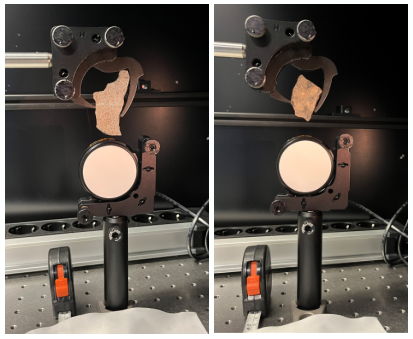- 1University of Craiova, Str. A. I. Cuza nr. 13, 200585 Craiova, Romania
- 2Astronomical Institute of the Romanian Academy, Research, Bucharest, Romania (popescu.marcel1983@gmail.com)
- 3Instituto de Astrofísica de Canarias (IAC), C/Vía Láctea s/n, 38205 La Laguna, Tenerife, Spain
- 4Departamento de Astrofísica, Universidad de La Laguna, 38206 La Laguna, Tenerife,Spain
- 5HE Space Operations B.V. for ESA, European Space Research and Technology Centre, Noordwijk, Netherlands
- 6Department of Mechatronics, Optics and Engineering Informatics, Budapest University of Technology and Economics, Budapest, Hungary
- 7Archaeology, Environmental Changes, and Geo-Chemistry, Vrije Universiteit Brussel, Brussels, Belgium
- 8Aurora Technology B.V. for ESA, European Space Astronomy Centre, Villanueva de la Canãda, Spain
- 9Aurora Technology B.V. for ESA, European Space Astronomy Centre, Villanueva de la Canãda, Spain
- 10Royal Belgian Institute for Space Aeronomy, Av. Circulaire 3, 1180, Brussels, Belgium
- 11cosine Research BV, Warmonderweg 14, 2171 AH Sassenheim, The Netherlands
- 12ESA, European Space Astronomy Centre, Villanueva de la Canãda, Spain
Introduction
The cosine* HyperScout-H (HS-H) instrument will fly aboard the ESA/Hera spacecraft. This mission [1], focused on planetary defense, aims to thoroughly characterize the (65803) Didymos near-Earth binary asteroid following the impact of the NASA/DART mission. It will launch in October 2024 and it is expected to reach the target by February 2027.
HS-H captures hyperspectral images over 657 - 949 nm wavelength range. Each macropixel, made of a 5 x 5 matrix of pixels, records the signal across 25 different narrow bands, with each band corresponding to a pixel. These measurements will represent a key element for understanding the Didymos - Dimorphos system, including its composition, the space-weathering effects and the potential presence of exogenous material. Also, they will complement the data obtained by the main camera (Asteroid Framing Camera) used for geomorphological studies, and for searching the presence of boulders near the two asteroids. Moreover, HS-H will provide high spatial resolution images of the crater resulting from the NASA DART impact. Another use of the instrument may occur in March 2025, during the cruise phase, when the spacecraft will perform a swing-by of Mars. It is expected that Phobos and Deimos, the two natural satellites of Mars, can be spectrally characterized by Hera/HS-H.
This presentation will provide an overview of the ongoing scientific activities to exploit this instrument. Its focus will be on cross-calibrating HS-H in the laboratory using meteorite samples.
Experiment setup
Two bulk meteorite samples were received from Archaeology, Environmental Changes, and Geo-Chemistry (AMGC) in Belgium. One piece, approximately 6 x 3 cm in size, originated from the El Hammami meteorite, an H5 ordinary chondrite. The other piece, measuring about 4 x 3 cm, was a fragment of the Sayh al Uhaymir (SaU) 001 meteorite, also an ordinary chondrite but of L5 subtype.
The reference spectra were obtained over the 550 - 4200 nm with a dedicated setup using the SHADOWS spectro-goniometer at Institut de Planétologie et d’Astrophysique de Grenoble (IPAG), France. The sample area measured was about 5.2 mm x 5.2 mm covered with 7 optical fibers of around 1.3 x 1.7 mm each. The optical arm of the spectro-goniometer was set at the nominal geometry of incidence 0° and emergence 30°, to simulate the most common viewing geometry of asteroids from the Earth [2].
The HS-H instrument was used to obtain hyperspectral images of the two samples, in the laboratory facilities of ESTEC (Noordwijk). The setup is shown in Fig. 1. A halogen lamp was used to illuminate both the sample and the spectralon. A number of 45 images were acquired, 15 for El Hammami, and 30 for SaU 001. Different exposure times were used, 500 ms, 1 sec, and 1.5 sec. In order to reduce the read-out time, we acquired subframes (regions of interest).

Fig. 1 The setup used to obtain the hyperspectral images of the two meteorites samples with HS-H. The left image shows a piece of El Hammami, while the right one corresponds to SaU 001.
Data analysis and results
The pre-processing of the data includes the dark subtraction and the flat field correction. Then, in order to obtain the spectral data, we applied the demosaicking algorithm that takes into account the pixel position and its corresponding wavelength (the central wavelength of each narrow band filter). The reflectance spectra are computed by dividing the spectrum of the meteorite by the one obtained for the spectralon.
The first approach was to consider a wide region of 10 x 10 macropixels over each sample (red squares in Fig. 2). The resulting curves show an excellent match between the reference spectra and the data obtained with HS-H. The comparison is shown in Fig. 2.
The second step was to consider the spectral curve resulting for each macropixel of HS-H. To analyze these measurements, we generated a taxonomic classification map (Fig. 3), using the classification system developed by [2]. We also determined the spectral slopes across the surface and an estimation of the depth of the absorption band at 1 µm. This surface mapping shows clear patterns consistent with the compositional variation across the meteorite.

Fig. 2 Comparison between the spectra obtained with HS-H (in blue), and the reference spectra obtained in the laboratory (in red). The corresponding HS-H image is shown on the left of each plot. The red square on each image marks the macropixels used to retrieve the meteorite spectrum.
Fig. 3 The taxonomic type (using the Mahlke [3] classification system) assigned to each macropixel .
References
[1] Michel, P. et al. (2022) Planetary Science Journal, 3, id.160;
[2] Potin S. et al.(2018) Applied optics, 57(28), 8279-8296, (2018);
[3] Mahlke, M. et al. (2022) A&A, 665, id.A26;
* https://www.cosine.nl/
How to cite: Popescu, M., de León, J., Goldberg, H., Kovács, G., Krämer Ruggiu, L., Nagy, B., Prodan, G. P., Grieger, B., Kohout, T., Licandro, J., Karatekin, Ö., Esposito, M., and Küppers, M.: Hyperspectral imaging of meteorites using the HyperScout-H instrument, Europlanet Science Congress 2024, Berlin, Germany, 8–13 Sep 2024, EPSC2024-586, https://doi.org/10.5194/epsc2024-586, 2024.